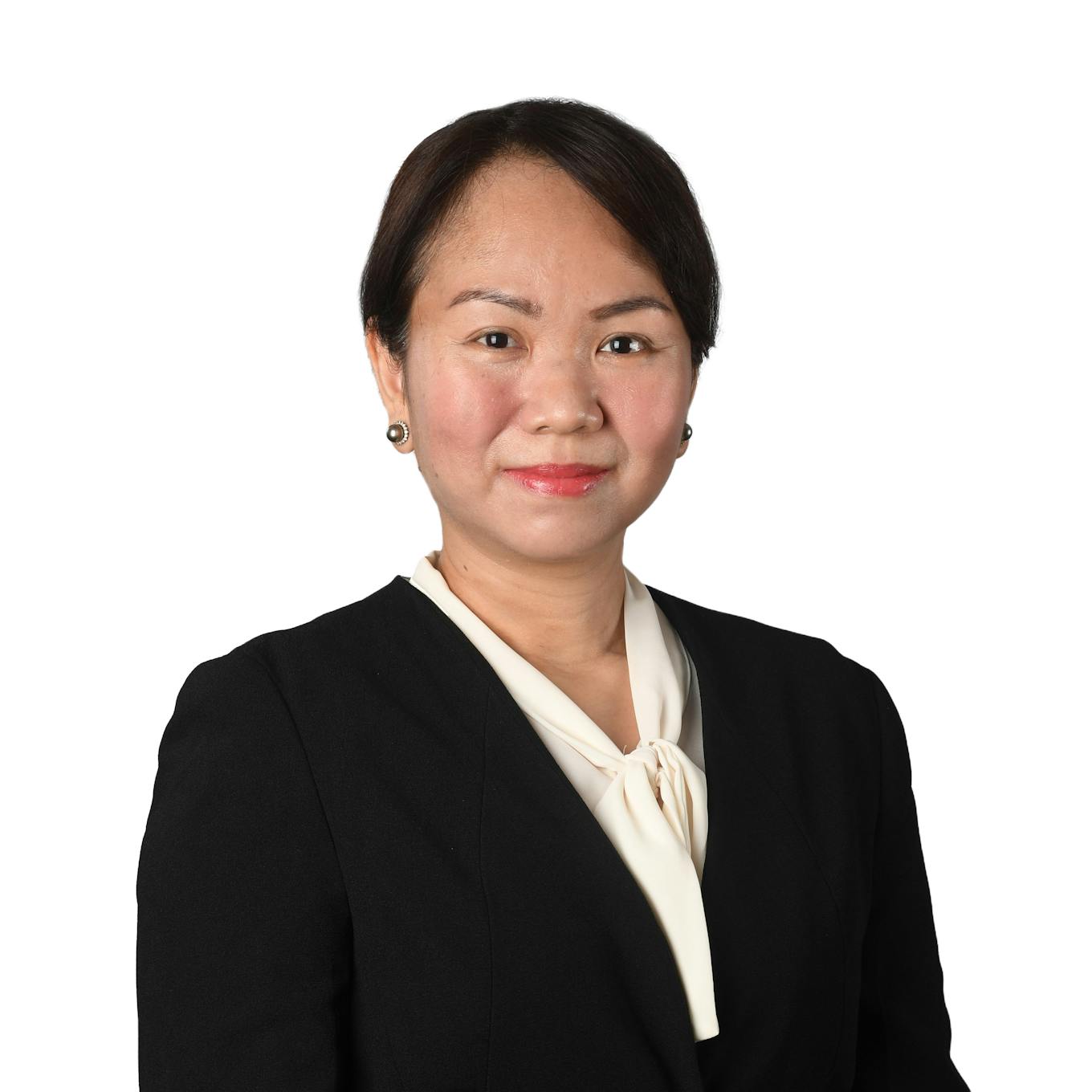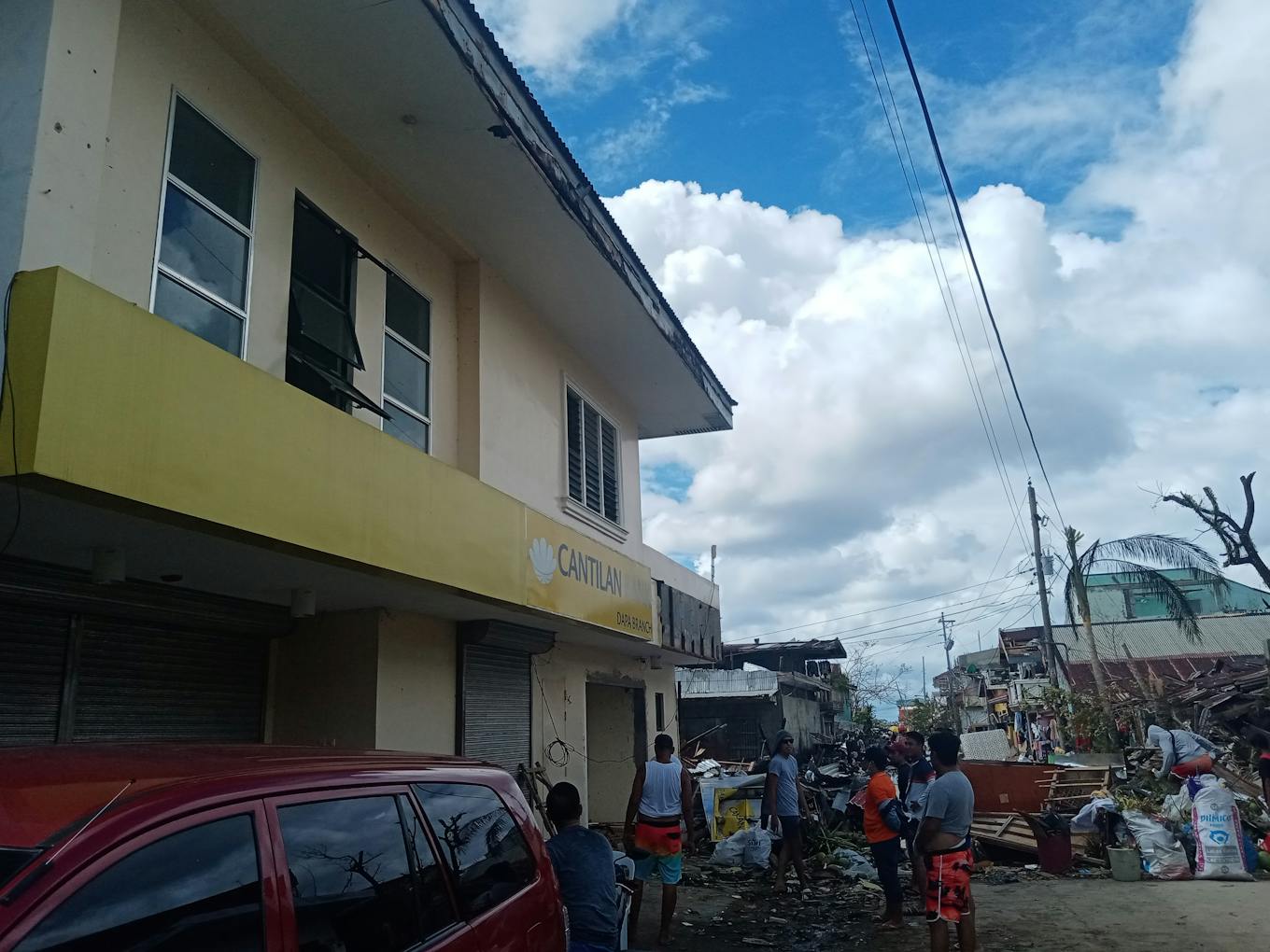The Philippine Central Bank, known as the Bangko Sentral ng Pilipinas or the BSP launched in July its inaugural sustainability report, one of the only Southeast Asian national regulators besides Singapore to have a publication dedicated to green finance.
To continue listening, subscribe to Eco‑Business.
There's something for everyone. We offer a range of subscription plans.
- Access our stories and receive our Insights Weekly newsletter with the free EB Member plan.
- Unlock unlimited access to our content and archive with EB Circle.
- Publish your content with EB Premium.
The report detailed how it is carrying out its first empirical study of climate impacts on banks through a series of vulnerability and stress tests on its own branches and offices nationwide, afterwhich the study will be applied to other financial institutions across the country.
The first stress test that the BSP conducted was with the help of the International Monetary Fund and the World Bank last year, where they measured the economic and financial impact of damage to bank infrastructure from typhoon winds.
BSP is currently conducting another series of tests covering both universal and rural banks. Larger banks can easily apply sophisticated tools to manage such risks, but smaller banks whose depositors are usually small-to-medium sized enterprises are more vulnerable. Using a local online platform, the stress test will calculate the impact of storm surges, severe winds, flooding, landslides and volcanic hazards in bank locations.
The results will lead to a circular guideline which will show the quantitative impact of climate change on banks and instruct them on how to effectively manage climate risk.
The BSP sustainability report also said it is setting up guidelines for the country’s first national taxonomy—a tool that can help translate the country’s low-carbon commitments into action.

Lyn Javier has been with the Bangko Sentral ng Pilipinas for 25 years, starting out with being in charge of examining thrift and rural banks to moving up to assistant governor in 2021. Image: BSP
The draft will be released as a “consultative document” within the month, where they will be soliciting insights and inputs from the sector before publication.
In this podcast, Eco-Business talks to Lyn Javier, assistant governor of the BSP, to discuss the significance of these initiatives in helping the country meet its climate ambitions and the challenges faced in achieving them.
Tune in as we talk about:
- The challenges and signficance of creating the central bank’s first sustainability report
- The implications of an empirical study of climate impact on banks
- Will the Philippines’ first national taxonomy include a managed coal phase out?
- The BSP’s role in the coal phase out pledges of local banks
- The challenges of putting climate specific rules and regulations on the BSP agenda
- What’s on the horizon for BSP’s sustainability ambitions?
The edited podcast version:
Thank you so much for being with us today, assistant governor Javier, and congratulations on the Central Bank’s efforts in coming up with its first sustainability report, something that not all central banks in Asia have. Tell us about your journey in crafting the report.
The BSP Sustainability report is one of the commitments of the BSP under the sustainable central banking programme. We launched this last December, 2022, and we have 11 commitments already, including the publication of a report that embodies our practices and policies, and how we have embedded sustainability principles in our operations.
All the work actually started with our leadership, the BSP Monetary Board which adopted the sustainability agenda. It started with a tone that came from the top. Now we have implemented capacity and awareness building programmes within the bank to also familiarise the personnel of the BSP with the sustainability agenda. Then we conducted a vulnerability assessment exercise on the branches and offices of the BSP in the region using a local tool called Hazard Hunter.
So we assess the vulnerabilities of these banks then the results of this assessment is fed into our own risk management system. We also did a self-assessment exercise where we identified key operations of the BSP and identified the gaps in terms of adopting our own sustainability agenda.
The challenge is not in preparing the sustainability report, but signaling and flagging to the organisation that we are doing this, and we are committed to the sustainability agenda.
The self assessment exercise is quite difficult to complete, particularly if you are not aware of what the risks are. That’s why it has to be complemented with engagement, as well as partnerships with experts and development partners to guide us in the process.
When you say you had to conduct self assessment exercises and the difficulty was in the particular branches of BSP, was it because maybe not all staff in the offices nationwide understood the susatinability terminologies or concepts?
The self assessment exercises covered all departments and units within the Bangko Sentral. I guess you’re correct. We’re talking about terms that we’re not familiar with. We are looking at targets and objectives that are not part of our day to day operations. That’s why it’s very important for us to tap the expertise of experts and our development partners to guide us through the process.
Why is it significant for the BSP to have its own sustainability report? Not all central banks in Asia report their sustainability progress.
I think it signals a strong commitment on the part of the BSP to promote the sustainability principles that we are also adopting, and sets out standards for other financial institutions to follow.
“
We also have to assess the potential impact of climate change on the vulnerable sector …The bigger banks adopt sophisticated tools to manage these types of risk. But we want to also put our focus on smaller banks that are frequently affected by extreme weather episodes.
The report said the bank is carrying out the first empirical study of climate change’s impact on the country, and it will push for lenders to disclose climate assets. What are the implications of this for Philippine banks?
We had the first stress testing exercise under the financial sector assessment programme mission jointly conducted by the IMF and the World Bank. They assessed physical risk and measured the economic and financial impact of physical capital destruction from typhoon winds, and that report has been published.
Now again, with a development partner, we’re conducting a stress test for transition risk and a vulnerability assessment exercise. Now, the stress testing for transition risk covers the bigger banks. We’re talking about the universal and commercial banks. The vulnerability assessment exercise, now this covers the smaller banks, for instance rural banks.
The results of both of these exercises would be a technical note featuring the methodology that we adopted, as well as an insights paper. We wanted to share our experience in conducting this exercise, with the aim of furthering inform the risk management systems and decisions of our supervised financial institutions.
This would lead to a circular or a policy issue once the guidelines and expectations of the BSP on the conduct of climate stress testing exercises have been carried out. Anything that can be measured can be managed. So when you see the quantitative impacts of climate change, the idea is to facilitate action among financial institutions to effectively manage this risk.

Locals clear debris in front of Cantilan Bank, a rural lender in Surigao del Sur, Mindanao, in the aftermath of Typhoon Rai in 2022. Image: Cantilan Bank
When banks are able to disclose their exposure and potential impact internally, it will drive them to action. They’d be able to measure their progress year by year, and also investors would be more attracted.
We also have to assess the potential impact of climate change on the vulnerable sector, including micro, small and medium enterprises. The bigger banks adopt sophisticated tools to manage these types of risk. But we want to also focus on smaller banks that are frequently affected by extreme weather episodes. We hope that they could further build and enhance their operational resilience so that in the event of a typhoon, they can still provide financial services to households and businesses in their areas.
In cases of extreme weather episodes, we have high levels of non-performing loans and low deposit levels. Because of this experience, BSP has already institutionalised a set of relief measures for the smaller banks so that they could recover from the impact of a typhoon without the stringent requirements of the BSP.
The report touched on how it was setting up the Philippines taxonomy guidelines which it said would be built on the country’s nationally determined contributions and the Asean’s taxonomy. The Asean’s taxonomy is the first one to include a coal phase out. Since you’re basing our taxonomy on it, does this is mean that you may be also crafting our taxonomy to include a managed coal phase out?
The regulatory framework expects bank to progressively increase their exposures to green and sustainable projects.
We know that change will not happen overnight and we know that the financial institutions continue to support the needs of the economy. So that’s a critical balance between transitioning to sustainability and ensuring that the economy has its financing needs supported by the banking industry.
Having said that, we’re developing the taxonomy along with other financial sector regulators under the auspices of the financial sector forum, including the Securities and Exchange Commission, the BSP, and the Philippine Deposit Insurance Corporation. It’s an important thing in promoting the sustainability agenda.
The taxonomy will involve identifying activities and investments using a traffic light system similar to the Asean taxonomy. The emphasis will be on climate change mitigation and adaptation. We do hope that it will facilitate decision making and promote alignment of the strategic objectives of our financial institutions and their actions and decisions in terms of their exposures. Now, for external stakeholders, the taxonomy will better guide investors in making informed decisions.
So, in short, the taxonomy will not yet specifically include a managed coal transition?
The transition to sustainable operations or to net zero will always be aligned with the energy plans and the national determined contributions of the country.
Do you have a timeline for when you will be launching the national taxonomy?
Yes, we will be publishing a consultative document on the taxonomy. We are targeting to launch it this month. So, we will be soliciting insights and inputs from various stakeholders before we publish the document.
In 2020, the central bank started requiring local financial institutions to report on their energy investments. That same year, RCBC became the first Filipino bank to declare that it will stop funding new coal projects. Bank of the Philippine Islands followed suit the year after. In 2022, BDO said that it will cut its coal exposure by half in the next decade. Do you think the BSP circular had a hand in these bank announcements of reducing coal investments?

The Rizal Commercial Banking Corporation Plaza houses the bank’s offices in Makati City, Philippines,. RCBC is the first Filpino lender to make an open stand against coal. Image: RCBC Plaza
Even before we issued Circular No. 1085 on sustainable finance we had what we call the “first mover banks”. They are well ahead in terms of developing products and services and promoting the sustainability agenda. They have dedicated offices and sustainability officers already. These banks also facilitated action in the banking industry.
What I could say is that the publication of the sustainability report supports the initiatives and strategies of these financial institutions and highlights that there’s one goal in the financial sector and that is to adopt a sustainability agenda.
So BSP can’t take all the credit for our banks divesting from coal?
No [laughs].
Why is it a challenge to put climate-specific rules and regulations on the BSP agenda?
We are only familiar with the impacts of climate change like the impact of extreme weather episodes. That’s why I mentioned earlier that even before we adopted a sustainable finance framework, we have in place regulatory measures for banks affected by extreme weather episodes.
But for the slow onset trends like rising sea levels or temperature, we cannot yet identify these triggers and even before you adopt the sustainability agenda, you have to understand how this would be transmitted to the financial statements of banks. As [former England central bank governor] Mark Carney put it in his Tragedy of the Horizon speech, the time horizon that we are looking at for the impacts of climate change is quite long. It’s different from the usual time horizon that we’re using for our risk surveillance and assessment.
What’s next for the BSP in terms of sustainability?
We are also looking at revising or amending the reports we get from banks. These are prudential reports to capture more granular information to assess the ESG [environment, social, governance] related risk exposures of the banking industry. Right now globally, the reports that regulators are receiving are not designed to capture ESG related risk.
What are you most proud of with Bangko Sentral ng Pilipinas that would set it apart from other central banks in Asia?
Bangko Sentral ng Pilipinas is not just about adopting international standards or being aligned with global best practices. We are sensitive to domestic conditions and challenges. We make sure that the policies we issue and the approach that we are taking is suited to the banking industry and is responsive to the needs of financial institutions. At the end of the day, we wanted to promote a safe, sound, sustainable, resilient financial system to better serve Filipinos.
Join the conversation on how the Philippines can unlock sustainable finance. Register here for Unlocking capital for sustainability Philippines on 14 September 2023.




















